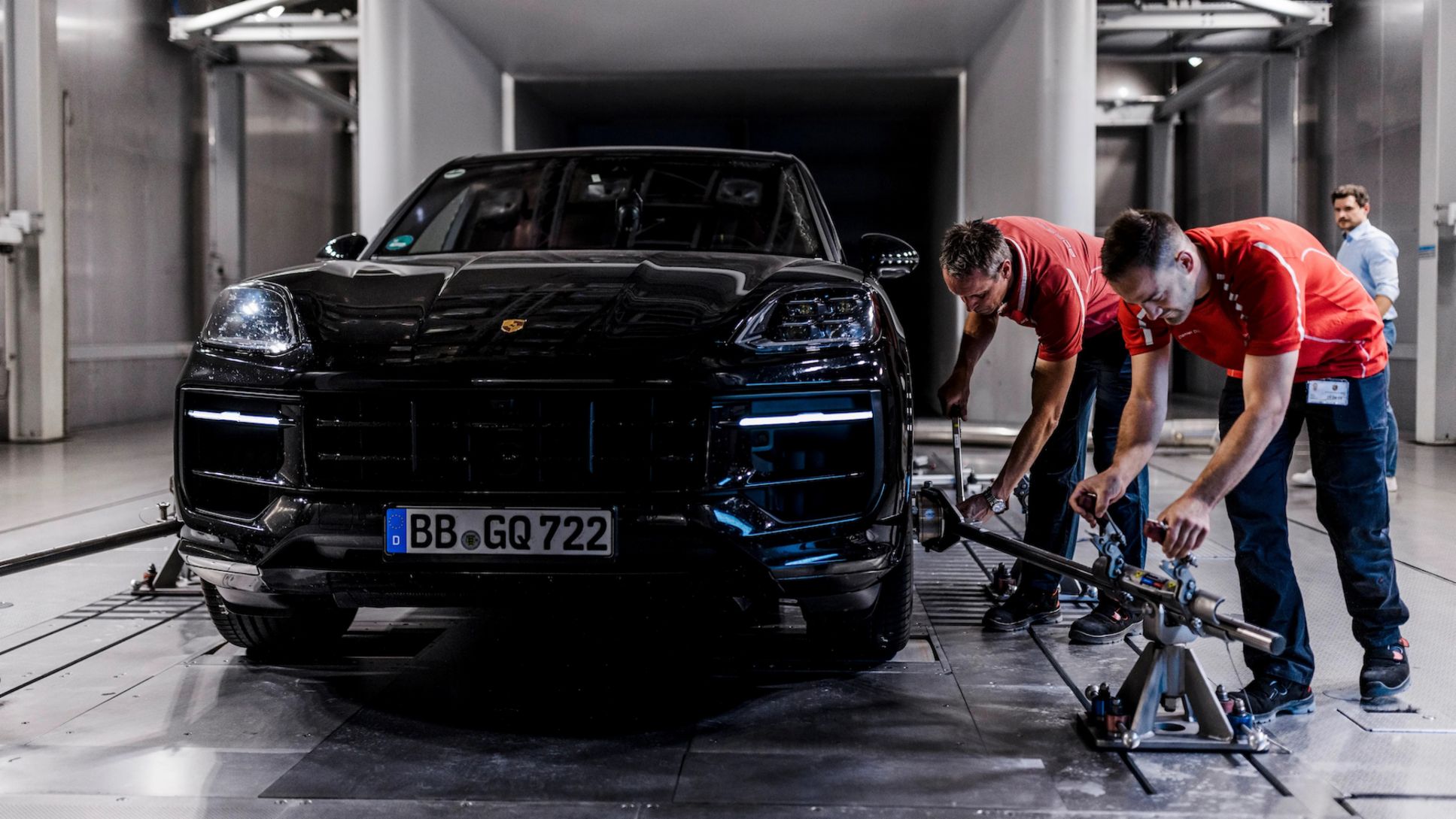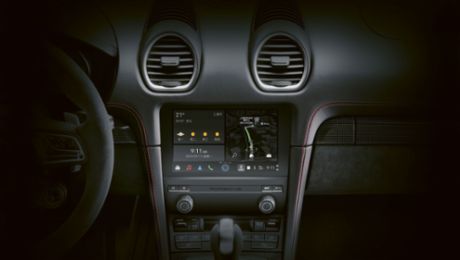From the Arctic Circle to South Africa, and from the Alpine pass to Dubai — what would normally involve flying around the world can be achieved in just a few hours back home at the Weissach Development Center. In the new climate center, which began operations two years ago, Porsche engineers can simulate nearly all possible weather and climate conditions in the world.
Exposing prototypes to various conditions
One of these engineers is Horst-Uwe Kroß. The 51-year-old has been working at Porsche AG for ten years and is now Head of V&V Thermodynamics. “From an air temperature of -30 to +50°C, and from a monsoon to a drizzle, we can reproduce everything in our new climatic wind tunnel in the climate center,” says Kroß. “We can also simulate wind speeds of up to 250 km/h for the vehicle and solar radiation of up to 1200 watts per square meter and relative humidity of between 5 and 95 percent.”
The overall aim is to expose prototypes in the climatic wind tunnel to the conditions that they would also be exposed to on the roads of the Arab Emirates or Norway — with the advantage that every simulation with the vehicle can be reproduced down to the smallest detail. “While the position of the sun changes in a natural environment and the temperature of the road surface increases or decreases, we can apply the exact same conditions to the vehicle at any time in the climatic wind tunnel, therefore making it possible to measure even the smallest changes,” explains Kroß.

What is tested in the climatic wind tunnel?
In the climatic wind tunnel, Kroß and his colleagues test, for example, the cooling circuit of a vehicle, battery behavior under different climatic conditions and component strength under various wind conditions. Typical activities also include imposing outside temperatures of 40°C to test whether a comfortable temperature of 22°C can be maintained inside the car. On the ‘cold side’, common test cases address, for example, window de-icing and measures to quickly achieve a comfortable inside temperature for passengers after entering the cold vehicle in winter.
“Our aim is to build sporty cars that also offer a high level of comfort,” explains Kroß. This is why the developers give him a list of requirements covering several hundred points to be tested on the prototype. Not only can the effect of environmental influences be explored in the climatic wind tunnel, but also the specific type of use: is the Cayenne driving over an Alpine pass with a trailer? Or is it in stop-and-go traffic in a city center? The driving situation can be simulated very precisely by adapting dynamometer resistance and using imported navigation data. There’s just one thing that Kroß would like to see: cornering. Work on this matter is still in progress.

From the test center to the streets
After the vehicle has been in the climatic wind tunnel, it’s also tested in real road traffic. “We cannot rely solely on our modern test bench, as driving on the road remains an essential part of the testing process,” says Kroß. “The typical Porsche driving experience is a subjective feeling influenced by the character of every vehicle — only human test drivers can find out whether a new model has it.” The prototypes are therefore also tested in cold and warm countries in order to compare the results with those from the climatic wind tunnel.
In the future, the demands on Kroß and his team will continue to change. The charging capacity of the cars will increase substantially, and the test facilities will therefore require appropriate technical features for simulation. Moreover, constant changes in legal requirements for testing stipulate the continuous adaptation of the test benches.
“You have to think of the building and the systems inside it as one big orchestra. Everything has to interact in such a way that we can consistently reproduce the exact same conditions down to a tenth of a degree,” says Kroß. “The human brain reaches its limits with so many components — artificial intelligence will help us to harmonize the many instruments of the orchestra in a finely tuned way.”




